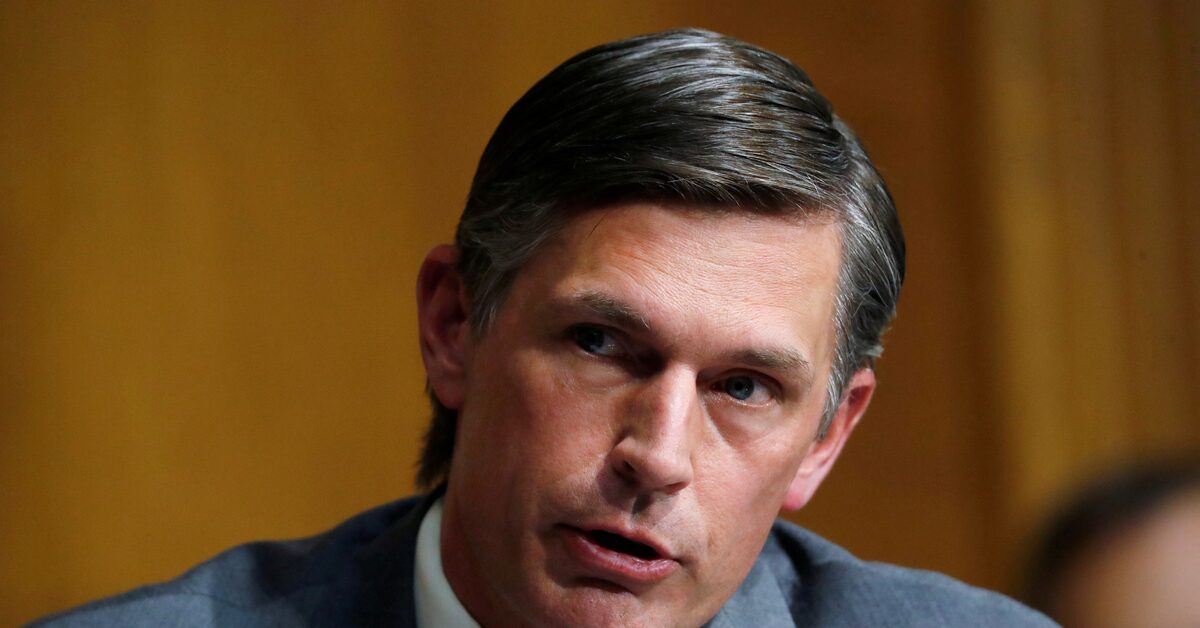Trump's Aerospace Legacy: Promises, Numbers, And The Lack Of Transparency

Table of Contents
Campaign Promises and Initial Policy Actions in Aerospace
Trump's campaign rhetoric heavily featured a renewed focus on space exploration and national security in space. This translated into several key policy actions during his presidency.
Space Force Creation and its Impact
The establishment of the United States Space Force stands as a major policy achievement of the Trump administration. This sixth branch of the armed forces, championed by Trump, aimed to better protect and leverage U.S. assets in space.
- Increased budget allocation: The Space Force received significant budget increases, though diverting resources from other existing programs.
- Recruitment challenges: Building the Space Force faced initial challenges in recruiting and retaining specialized personnel.
- Operational readiness: The Space Force's operational readiness and the impact of its establishment on overall national space capabilities remain subjects of ongoing debate and evaluation.
Focus on Commercial Space Development
Trump's administration heavily emphasized the role of the private sector in space exploration, aiming to foster innovation and reduce government spending.
- SpaceX partnerships: Successful collaborations with SpaceX on crucial missions, including astronaut transport to the International Space Station (ISS), exemplify this public-private partnership model.
- Boeing contracts: Boeing also received significant contracts, although facing delays and challenges in some programs.
- Regulatory hurdles: Streamlining regulations and fostering a more business-friendly environment for commercial space ventures were stated goals, but navigating complex bureaucratic processes proved challenging.
NASA Funding and Priorities under Trump
The Trump administration oversaw shifts in NASA's budgetary priorities and mission focus.
- Artemis program funding: Increased funding was directed toward the Artemis program, aiming for a return to the Moon and eventual human missions to Mars.
- Reduced funding for Earth science: Conversely, some Earth science programs experienced budget cuts, sparking controversy among scientists and environmental advocates.
- International collaboration changes: The administration's approach to international collaboration in space exploration varied, with some partnerships strengthened while others faced challenges.
Assessing the Numbers: Budget Allocation and Actual Achievements
Understanding Trump's aerospace legacy requires a careful analysis of budgetary allocations and the outcomes of specific programs.
Analysis of Aerospace Budget Changes
The Trump administration oversaw fluctuations in aerospace-related budgets. While certain programs, like the Space Force, saw substantial increases, others experienced cuts. Analyzing these changes requires comparing data across different years and comparing them to previous administrations' spending patterns (using charts and graphs would be beneficial here).
Evaluating Contract Awards and Program Successes
Assessing the effectiveness of Trump's aerospace policies necessitates a critical examination of contract awards and their results.
- Analyzing the distribution of contracts among different aerospace companies reveals potential biases or patterns.
- Evaluating the success rates of major programs launched or continued during his term reveals whether the funding translated into tangible achievements. This section needs specific examples of successful and failed projects, including quantifiable results where possible.
Transparency and Accountability Issues Surrounding Aerospace Spending and Programs
A significant critique of the Trump administration's approach to aerospace lies in the perceived lack of transparency surrounding budgetary decisions and program performance.
Lack of Public Information and Data Accessibility
Obtaining comprehensive data on aerospace spending and program performance proved difficult during the Trump administration. The limited accessibility of information hindered proper public oversight and scrutiny.
- Highlighting specific instances of delayed or restricted data releases is crucial for strengthening this section.
- Any controversies or investigations related to transparency should be included here.
Scrutiny of Contract Awards and Potential Conflicts of Interest
Several contract awards during the Trump administration faced scrutiny over their fairness and impartiality, raising questions about potential conflicts of interest.
- Including specific examples of controversial awards, detailing the concerns raised and their outcomes, is vital to solidify this point.
- Mentioning any related investigations or audits further strengthens the argument.
Conclusion
In conclusion, Trump's aerospace legacy presents a complex picture. While the creation of the Space Force stands as a significant accomplishment, a comprehensive evaluation reveals a mixed record characterized by substantial investments, shifts in programmatic priorities, and a troubling lack of transparency regarding budgetary decisions and contract awards. While ambitious promises were made, a full assessment demonstrates that the administration’s legacy in aerospace is ultimately marked by a considerable shortfall in transparency and accountability. To ensure responsible future investment in aerospace, further investigation into issues like "Space Force budget," "NASA funding under Trump," and "Aerospace contract transparency" is essential. By demanding greater accountability and transparency, we can ensure that future aerospace initiatives are both effective and ethically sound.

Featured Posts
-
 Good Morning America Job Cuts Star Fears Amidst Backstage Drama
May 21, 2025
Good Morning America Job Cuts Star Fears Amidst Backstage Drama
May 21, 2025 -
 Record Breaking Run Fastest Person To Cross Australia On Foot
May 21, 2025
Record Breaking Run Fastest Person To Cross Australia On Foot
May 21, 2025 -
 Huizenprijzen Nederland Verschillende Perspectieven Van Abn Amro En Geen Stijl
May 21, 2025
Huizenprijzen Nederland Verschillende Perspectieven Van Abn Amro En Geen Stijl
May 21, 2025 -
 Legislators Pledge To Recover 1 231 Billion In Oil Revenue
May 21, 2025
Legislators Pledge To Recover 1 231 Billion In Oil Revenue
May 21, 2025 -
 Record Breaking Run Man Fastest To Cross Australia On Foot
May 21, 2025
Record Breaking Run Man Fastest To Cross Australia On Foot
May 21, 2025
